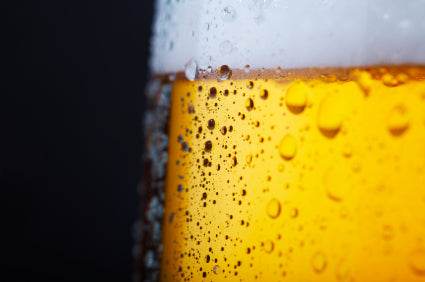
What gives lighter bodied beers such as lagers and pilsners their color? Keep reading to learn more about how these refreshing, lighter colored beers acquire their distinctive color, flavor and body.
Malt Is The Key
Beers get their color from the grains theyre brewed with. For example, a wheat beer tends to be very light in color. Rice and some other grains such as sorghum, which is used in many types of gluten-free beer, tend to lead to a lighter color in the finished beer as well. But these are largely outliers.
The single biggest factor in determining the color of a beer is how darkly roasted the barley is. Barley is roasted during the malting process; often, barley thats used in beer brewing is often simply called
malt.
Malted barley comes in a wide range of colors depending on how darkly its roasted. Light colored beers are produced predominantly with malt that is anywhere from yellow to tan to blondish in color, whereas darker beers come from malt that is anywhere from amber to brown to a dark, almost black coffee color.
Pilsner malts are generally yellow or tan in color. Malts for wheat beers are usually tan, but sometimes they even have an orange tint to them.
As with most things in the world of brewing, there are, naturally, exceptions to these rules. Point in case is the black lager, or
shwarzbier as its called in Germany. Its a beer that utilizes a black malt in combination with a classic German lager yeast.
And Malt Extract Is What Most Home Brewers Use
Of course, most home brewers dont actually malt and roast their own barley. Instead, they use malt extracts, which make home brewing a much easier thing to do. Light and extra light malt extracts are usually used to make light colored beers.
So now you know what makes a light beer light, and a couple other things about beer in general. Hopefully youve also got some inspiration for what path you want to take on your next beer brewing adventure!

 What gives lighter bodied beers such as lagers and pilsners their color? Keep reading to learn more about how these refreshing, lighter colored beers acquire their distinctive color, flavor and body.
What gives lighter bodied beers such as lagers and pilsners their color? Keep reading to learn more about how these refreshing, lighter colored beers acquire their distinctive color, flavor and body.

 What gives lighter bodied beers such as lagers and pilsners their color? Keep reading to learn more about how these refreshing, lighter colored beers acquire their distinctive color, flavor and body.
What gives lighter bodied beers such as lagers and pilsners their color? Keep reading to learn more about how these refreshing, lighter colored beers acquire their distinctive color, flavor and body.